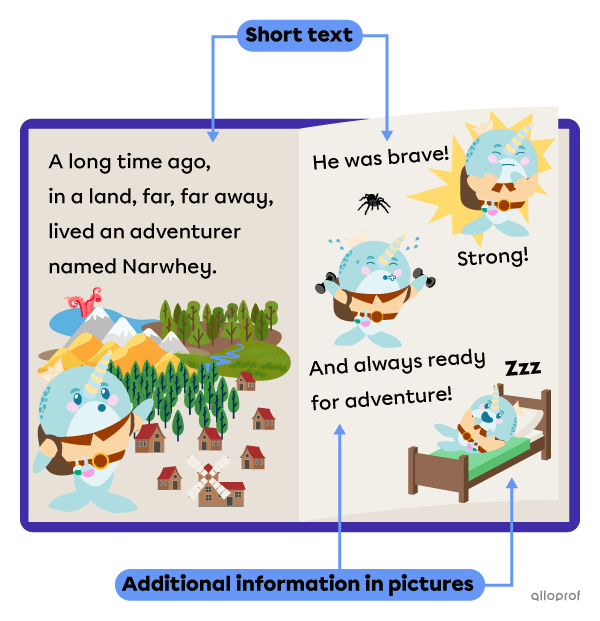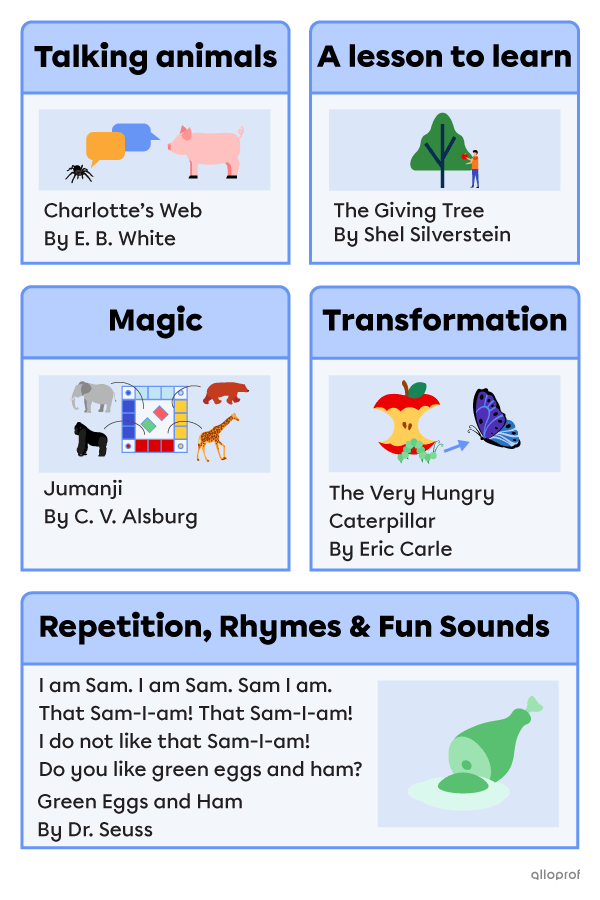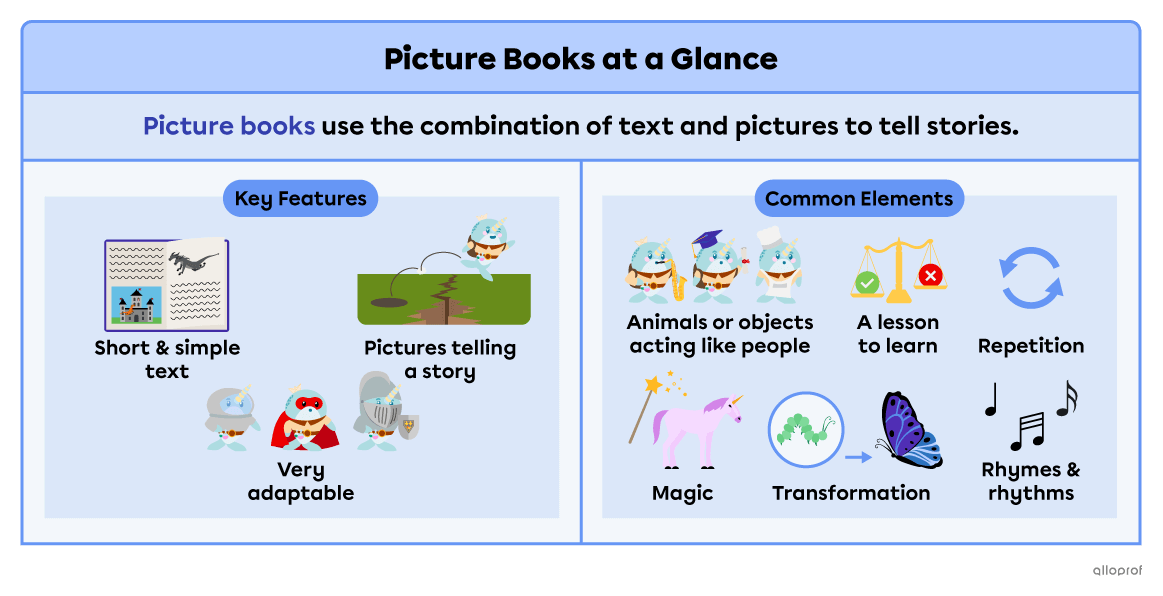Picture books use the combination of text and pictures to tell stories. The text is short and is supported by pictures that add extra information for the reader.
Here are some picture book key features.
Short & simple text
• Clear and simple sentences
• Suitable for young readers
• Precise word choice because of limited text space
Pictures tell a story
• Support the text, help understand it
• Give additional information like character actions, feelings or story setting
Easily adaptable
• Can tell any kind of story
• Can teach and provide information on any topic
• Cover a wide range of themes (friendship, nature, sharing, family…)

Here are some examples of common elements often found in picture books.
Animals or objects that act and talk like people
A lesson to learn
Repetition
• Words, phrases, character actions or dialogue
• Often repeated 3 times
Magical characters, objects or situations
Character transformation or changes
Rhymes, rhythm and fun-sounding words

